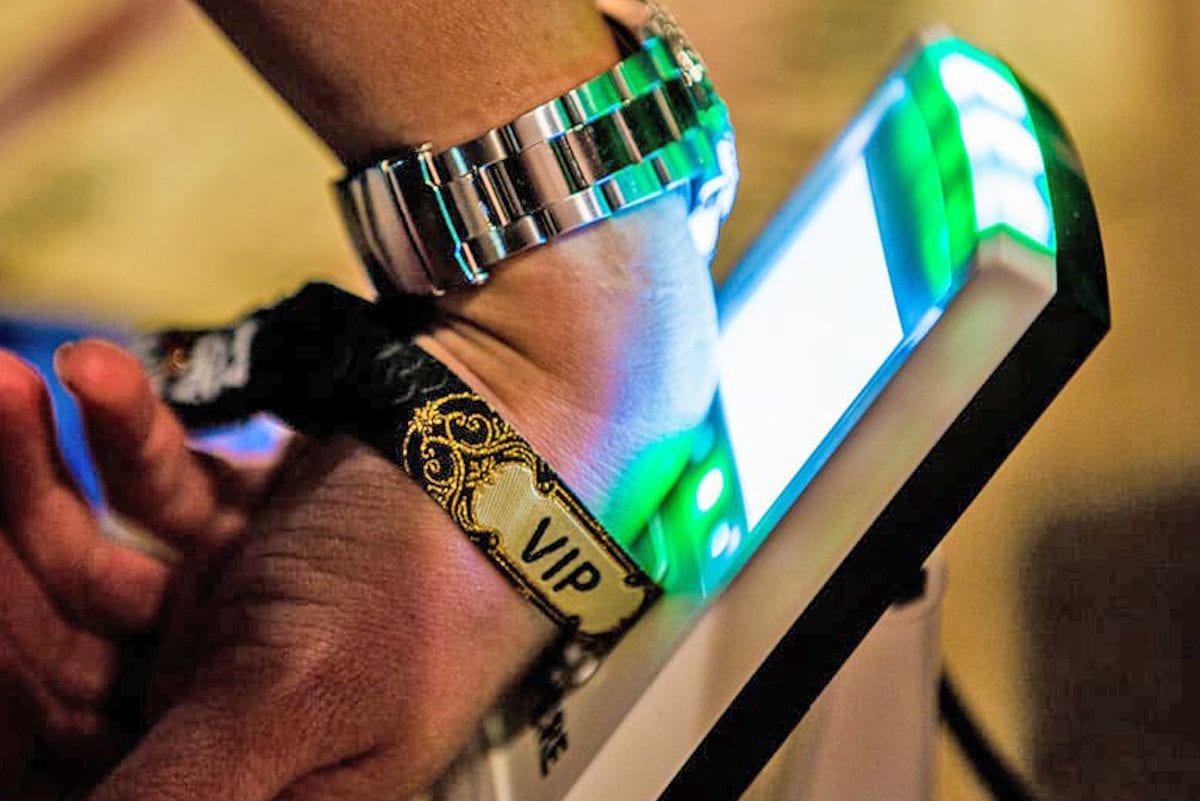Cashless payments aren’t the way of the future, it’s already here. In fact, RFID cashless payments are the bread and butter of Intellitix. Going cashless has a laundry list of benefits to be gained, such as increased security, shortened queues, quicker check-ins, more attendee engagement and the ability to collect analytics in real-time.
Many events are going the RFID way—and with good reason. But have you ever wondered what exactly RFID—radio frequency identification—is? Here, we will share with you what’s behind the RFID wristband and how it works to make events run smoothly and seamlessly for its attendees.
How Does it Work?
An RFID chip contains a smart tag, made up of an RFID chip and antenna. The tag can come in multiple forms, such as the commonly used plastic card or it can be embedded in other materials, including silicone and cloth.
RFID scanning works much like the scanning when you purchase your favorite everyday product: you hold it up to the scanner, the barcode transmits a message to the database of information, from there information such as the product name, price, etc. are provided by the barcode. Barcodes and RFID and barcodes are similar in that they are both scannable. After that, their similarities cease.
What are the Types of RFID Tech?
There are three types of RFID wristband tags: active, passive and battery-powered.
Passive RFID tags are most commonly used for large-scale events, as they are low power and use energy from the reader to power itself, which is the only time it’s on, so not much energy is used.
Active tags have a built-in battery and can transmit information at any point without requiring a reader. Battery-powered tags are only powered on when they are in proximity to readers.
How Does it Compare?
The benefits of RFID technology are near endless and is world’s away from traditional cash payments and barcode wristbands. The read rate of RFID technology is impressively quick, thousands of tags can be read in a matter of minutes, thus ridding events of long queues, which, unfortunately, is the nature of most events. This lets attendees get into the action sooner.

In the case an attendee’s information is ever incorrect, RFID tags can be modified in real-time, saving both the attendee and staff time.
The Event is Secure
RFID tags are incredibly tough to copy, as the database can be encrypted and secured with a password.
And of course, RFID wristbands reduce the chances of ticket fraud. Intellitix Access Control gets rid of this possibility by creating forgery-proof credentials and stopping fraudulent tactics, such as multiple uses of the same pass. In fact, Intellitix barred 7,028 unauthorized entries during a 4-day Comic-Con event in San Diego.
And not only will the event be more secure, but so will attendees. Payment information can be linked with RFID wristbands, so there’s no need to carry around cash and cards, eliminating the chances of it being lost or stolen; the ATM queue will also be shortened, as most attendees will then have no need to pull out cash.
How Much Information Can I Store?
The information stored on RFID tags doesn’t require much space. Information, such as identification, proof of purchase, access into hotels and/or VIP areas—and sometimes even social media information, which allows attendees to instantly post photos to Facebook or Instagram for all non-attendees’ viewing pleasure, increasing the event’s exposure, as well as its ROI.
For that reason, RFID wristbands don’t typically hold too much space, the largest passive RFID tag can store 3720 bytes, or 3.72 kilobytes; ultra-high frequency (UHF) RFID tags can store as much as 8000 bytes, or 8 kilobytes. For access control systems, RFID tags are typically 3 kilobytes or smaller.

The last location of the RFID wearer can be recorded as well, helping event organizers understand the flow at which foot traffic is moving, information which can be of benefit for future events.
RFID technology has proved to be one of the best ways to streamline the event process and up the level of security without being invasive. If you’d like to learn more about how RFID technology can help your event increase revenue, enhance security, or anything in between, the Intellitix team is only a click away.

